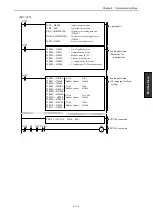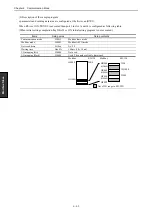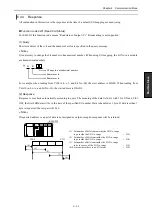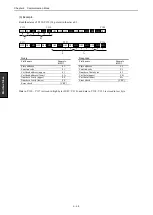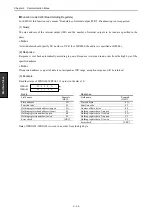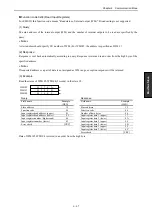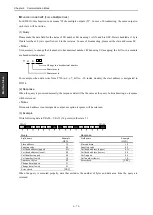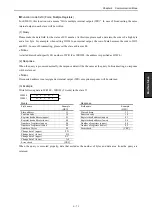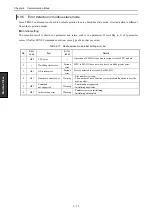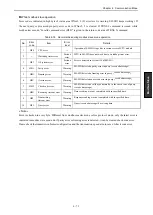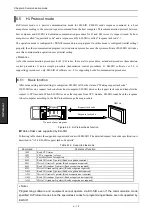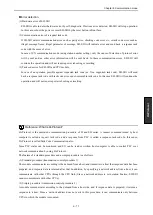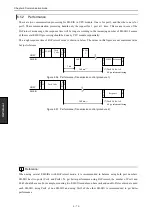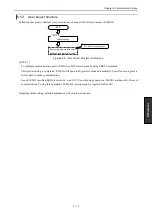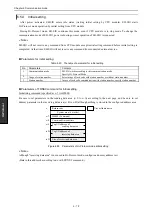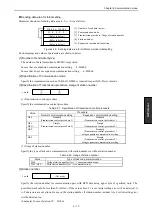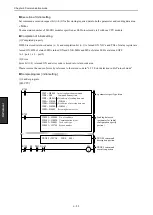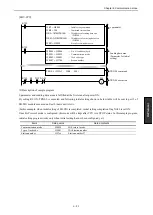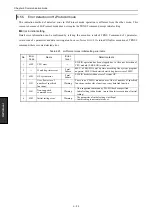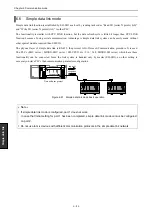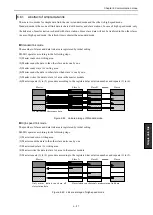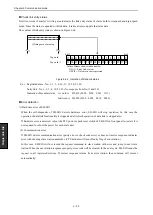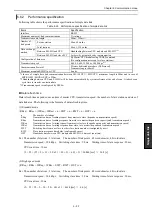
Chapter 6 Communication mode
6 - 75
Hi
-P
ro
to
col
Error detection
(1) Hardware error of EH-SIO
EH-SIO is able to detect hardware error by self-diagnostic. If serious error detected, EH-SIO will stop operation.
In this case, reboot the power or reset EH-SIO by the reset button in front face.
(2) Communication error of a request task code
If EH-SIO detects communication error, such as parity error, checking code error etc., or task code error, such as
illegal message frame, illegal parameter of message, EH-SIO will indicate error and send back a response task
code with the cause of error.
In case of 1:N communication mode (using station number setting), only the cause of detection of protocol error
will be sent and no other error information will be sent back. In these communication errors, EH-SIO will
continue the operation and will not require power rebooting or resetting.
(3) Task code error for EH-SIO and CPU module
In case of no operation possible against requested task code (ex. Non supported task code), EH-SIO will send
back a response task code with task code error or not-executable task code. In this case EH-SIO will continue the
operation and will not require power rebooting or resetting.
Reference : What is Hi-Protocol?
Hi-Protocol is the dedicated communication procedure of H and EH series. A request command issued by host
computer is called a request task code, and a response from PLC is called a response task code. In this sense,
Hi-Protocol is called Task Code Communication also.
Since PLC status can be monitored and I/O can be read or written, host computer is able to control PLC over
network communication by using Hi-Protocol.
The feature of a standard procedure and a simple procedure is as follows.
(1) Standard procedure (transmission control procedure 1)
The module communicates according to the demand from a host, and transmits to a host that response data has been
prepared, and response data is returned after that. In addition, by specifying a network address from a host, it can
communicate with other CPUs through the CPU link. (Since a network address is own station fixation, EH-SIO
cannot communicate with other CPUs.)
(2) Simple procedure (transmission control procedure 2)
A module communicates according to the demand from a host side, and if response data is prepared, it returns a
response to a host. Since a network address does not exist in this procedure, it can communicate only between
CPUs in which the module is mounted.
Summary of Contents for EH-150 Series
Page 2: ......
Page 10: ...M E M O ...
Page 30: ...Chapter 4 Installation 4 10 M E M O ...
Page 156: ...Chapter 7 System setup 7 12 M E M O ...
Page 164: ...Chapter 8 Daily and Periodic Inspection 8 8 M E M O ...

